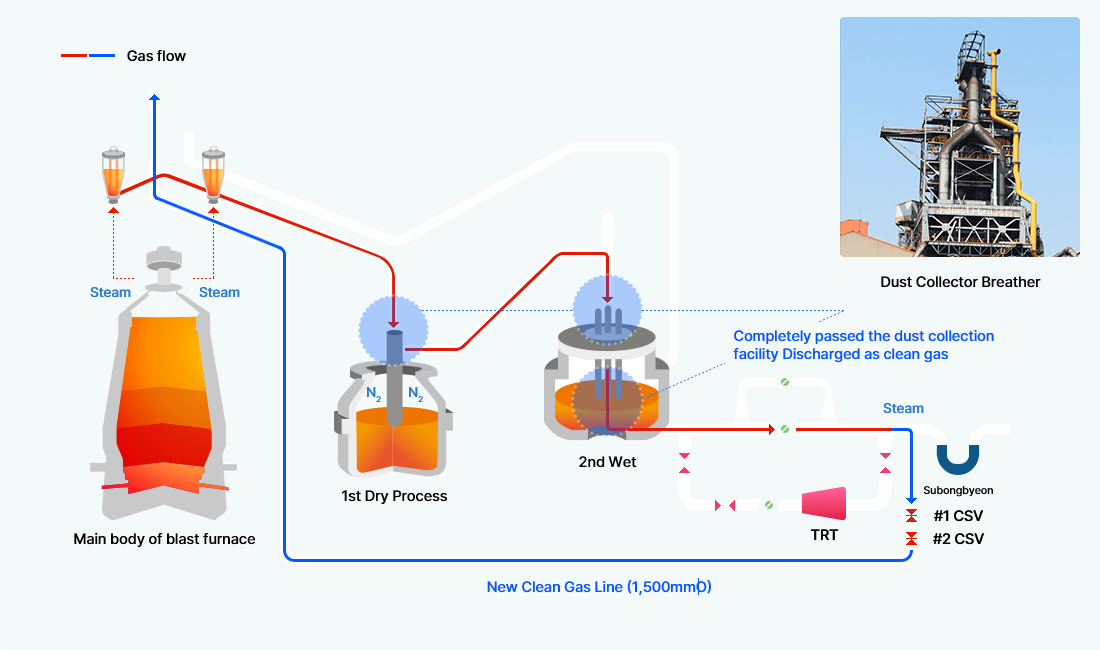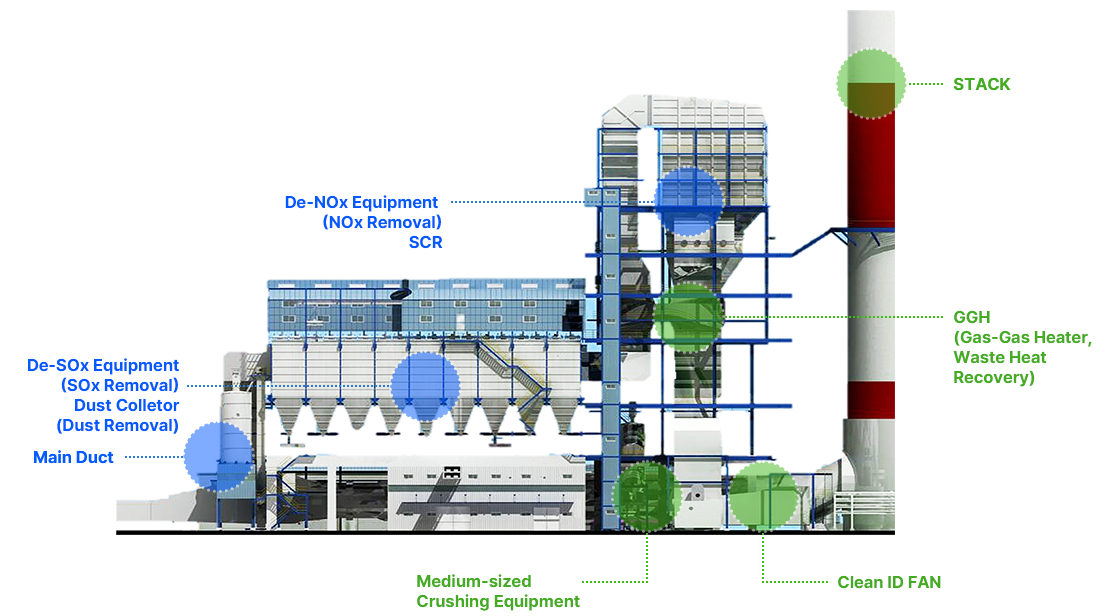Pollutants and Waste
Air Pollutants
Installation of Blast Furnace Dust Collector Breathers
Enhancing the Efficiency of Air Pollutant Reduction Equipment
- Sulfur Oxides (SOx): Since 2004, we have been proactively installing activated carbon adsorption equipment and sodium bicarbonate (NaHCO3) De-SOx equipment at our sinter plants, which are primary sources of SOx emissions. Recently, efforts have been made to further reduce SOx emissions by improving the efficiency of existing De-SOx equipment and enhancing the quality of off-gas (improving H2S removal efficiency).
- Nitrogen Oxides (NOx): To mitigate nitrogen oxides from their point of origin, we are upgrading existing burners in combustion facilities to low NOx burners. Additionally, we are managing emissions closely by utilizing SCR1), and SNCR2)) technologies at major emission sources, including sintering, power generation, and rolling processes
1)SCR: Selective Catalytic Reduction
2)SNCR: Selective Non-Catalytic Reduction
Fugitive Dust Reduction
-
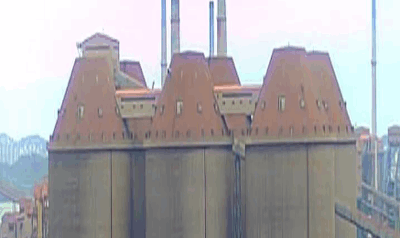 Silo
Silo -
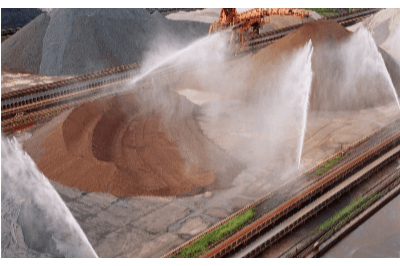 Automatic Watering
Automatic Watering -
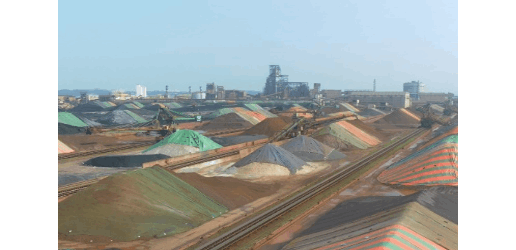 Dust Covers
Dust Covers
Chemical Substances
Chemical Substance Registration and Management System
In compliance with strengthened chemical substance management standards, we systematically manage chemical substances. Under the “Act on the Registration and Evaluation of Chemical Substances,” we have successfully registered 131 types of manufactured and imported chemical substances that each have an annual handling amount of over 1,000 tons. Furthermore, we plan to register and manage complex chemical substances, such as blast furnace slag and other chemical substances with an annual handling amount of less than 1,000 tons by the legal deadline.
If unauthorized hazardous chemical substances are detected, we block their entry and collaborate with suppliers to switch to non-hazardous chemical substances. If conversion is not feasible, we obtain government approval to handle them with appropriate disaster prevention equipment and facilities, including facility improvement and the use of protective equipment. We apply worker exposure standards that are stricter than legal requirements to manage the work environment and minimize worker exposure. Since 2022, we have implemented an in-house banned chemical substances policy, replacing them with low-toxicity products to reduce chemical exposure to workers and the environment.
To ensure systematic management of chemical substance handling sites, we have been operating a monitoring system since 2016 that tracks the entire distribution process, from the entry stage to the usage stage, of chemical substances. For vehicles transporting chemical substances, we have implemented a tracking system that allows for immediate location identification and damage minimization in case of an accident. Additionally, we are enhancing on-site chemical substance management by improving facilities to meet strict standards and installing leak detection systems.
-
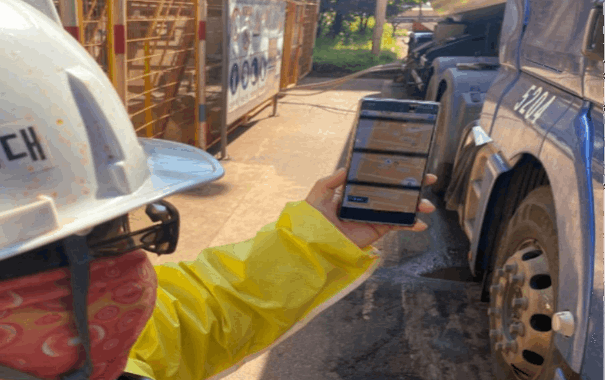 Chemical Substance Transportation Monitoring System
Chemical Substance Transportation Monitoring System -
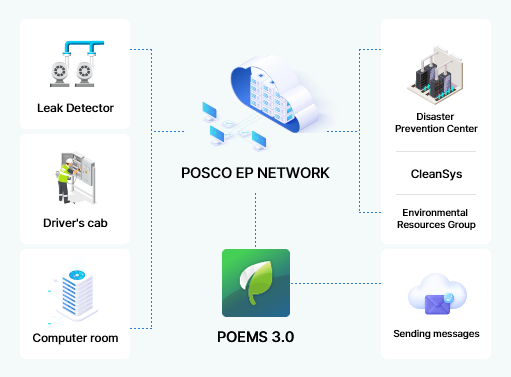 Chemical Substance Equipment Leak Detection System
Chemical Substance Equipment Leak Detection System
Chemical Accident Prevention and Response System
-
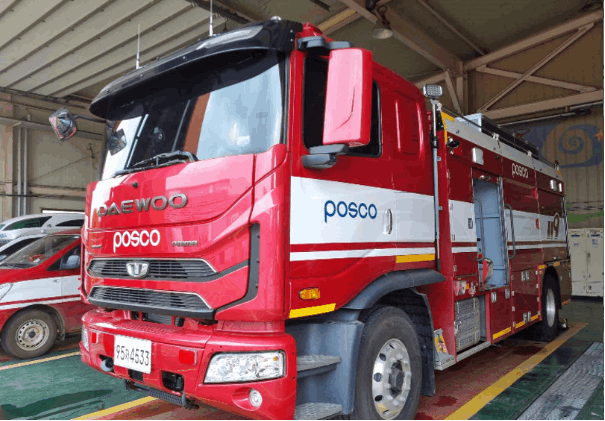 Specialized disaster prevention vehicle for chemical substances
Specialized disaster prevention vehicle for chemical substances -
 Joint public-private training
Joint public-private training
Supply Chain Chemical Substance Management
Designated Waste
Non-compliance with legal standards results in fines under the Waste Control Act. However, in 2023, POSCO processed all designated waste in full compliance with regulations, without any violations. Additionally, POSCO is continuously exploring new uses to minimize the generation of designated waste. In 2023, the proportion of designated waste to total waste remained at 0.56%.
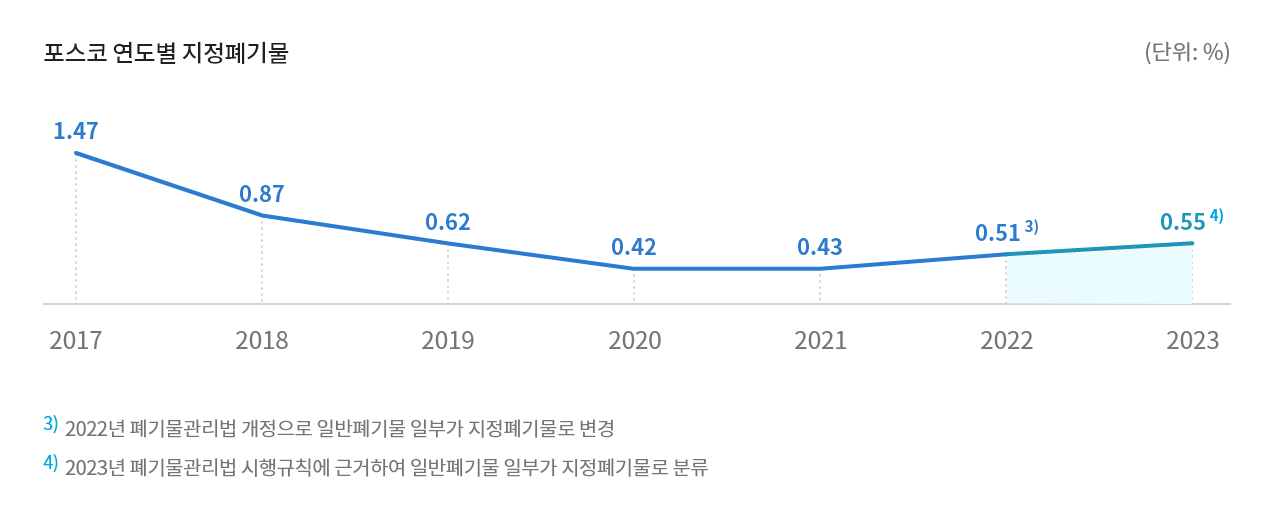
3)Following the amendment of the Waste control Act in 2022, some general has been reclassified as designated waste.
4)According to the Enforcement Rule of the Waste Control Act in 2023, some general waste has been classified as designated waste.
